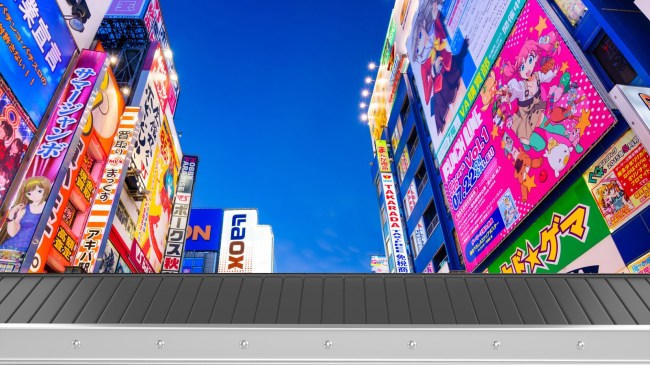istockphoto composite
Japan is seriously considering making a a 310-mile-long conveyor belt to replace semi-trucks when it comes to shipping freight long distances.
The proposed Tokyo-Osaka “Autoflow-Road” transport system would supposedly be able to ship the same amount of freight every day as 25,000 truck drivers.
According to SCMP, this massive network of conveyor belts would utilize tunnels beneath the major highways between Tokyo and Osaka as well as above-ground conveyor belts placed in the middle of the roads.
There could also be more conveyor belts located next to the hard shoulders of roads.
“Automated logistics roads are designed to get the most out of road space by utilising hard shoulders, median strips [central reservations] and tunnels beneath the roadway,” said Shuya Muramatsu, a senior official in the Japan Ministry of Land, Infrastructure, Transport and Tourism’s road economics research office.
“Our study is examining the impact on road traffic, including on surrounding roads, and costs.”
Interestingly, this wouldn’t actually be the first giant conveyor belt system ever put into place and used in Japan or elsewhere. The Drive reports that there is currently a 14-mile long conveyor belt being used in Kōchi prefecture for the mining industry and a 62-mile long conveyor belt being used in Western Sahara.
One of the main reasons for this outside-the-box thinking when it comes to shipping is the commercial truck delivery driver shortage that has been plaguing several countries including Japan and the United States over the past several years.
Japan’s driver shortage is only going to get worse as the country’s workforce is projected to decrease from 660,000 in 2020 to just 480,000 by the year 2030.
This proposed 310-mile conveyor belt system “will not only address the logistics crisis, but also help to reduce greenhouse gas emissions,” according to Japanese transport minister Tetsuo Saito.
According to The Yomiuri Shimbun, Japanese officials would like to get the system up and running as early as 2034, because by 2030, it is estimated that about 30 percent of all packages will not be delivered if the driver shortage continues at its current rate.

